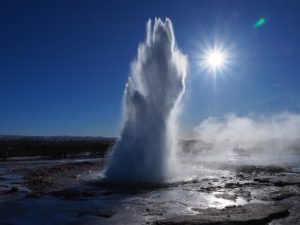 I can match you. Without even trying. It’s pure instinct for an empath. My emotions will rise up to meet and mix with yours. It’s crazy scary but exciting for a young empath. As you get older, you can learn to recognize the green lights and the red flags and where each encounter is likely headed. We can choose to lean in or get away. Because when your emotions become ours, it changes us. Simpatico cool and good. OR simpatico creepy and scary. That’s why we need to be careful who we spend time with. If your emotions bleed into us, does it make us feel energized or exhausted? Depends on the emotion.
I can match you. Without even trying. It’s pure instinct for an empath. My emotions will rise up to meet and mix with yours. It’s crazy scary but exciting for a young empath. As you get older, you can learn to recognize the green lights and the red flags and where each encounter is likely headed. We can choose to lean in or get away. Because when your emotions become ours, it changes us. Simpatico cool and good. OR simpatico creepy and scary. That’s why we need to be careful who we spend time with. If your emotions bleed into us, does it make us feel energized or exhausted? Depends on the emotion.
People like to be around empaths because we are good listeners. We are intense listeners. We are in the moment with you. We will meet you where you are. We become linked in. But do we want to link into the emotion you are serving up?
See the attached image. Emotional flow. Emotions can flow or be static. When I feel wary of the inner emotions coming my way from someone in close proximity to me, I try to picture their inside vibrations. If there is flow – like flowing lines – it’s okay. Emotions are flowing normally. If there are a lot of jagged and static lines, I disengage as quickly as possible because the chaotic feelings are overwhelming. I can’t quiet their emotions, and I have learned that it does an empath great harm to absorb toxic emotions for someone else’s relief.
So what are some examples of great flow moments and big static moments? Flow moments occur when combining with someone else’s emotions to achieve a higher (sometimes euphoric) level. They happen in romance, at concerts, during sporting events, while hiking. Worst static moments occur near someone out to do you emotional or physical harm. They happen in assault, browbeating, instability, shaming. Of course there are other examples of both, but you get the idea of the fun or the danger that empaths face when commingling emotions.
Tuning in to flow helps empaths know when to go for the ride and when to jump off the train.
Think about it cuz you know you’re gonna feel it.


 Geysers are beautiful, but you don’t want to feel like one.
Geysers are beautiful, but you don’t want to feel like one.